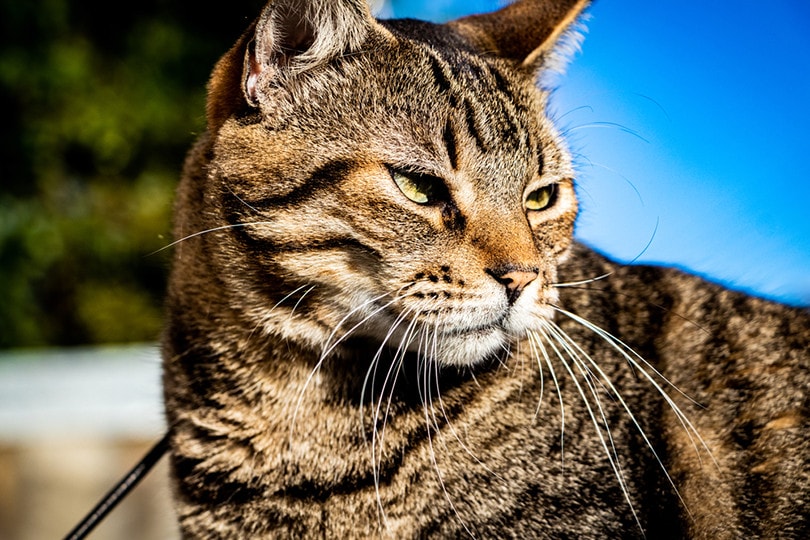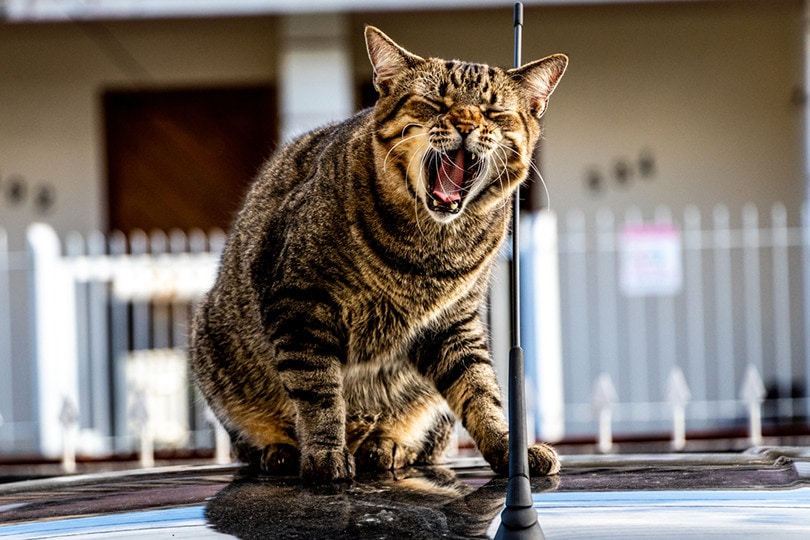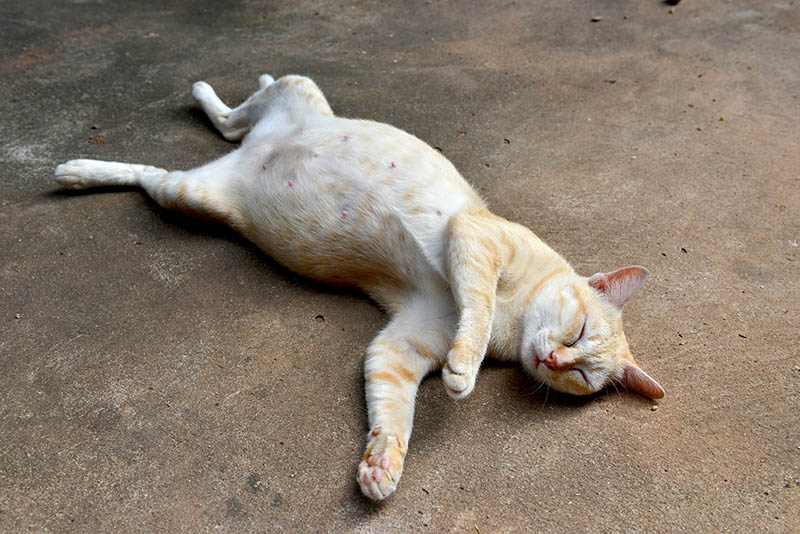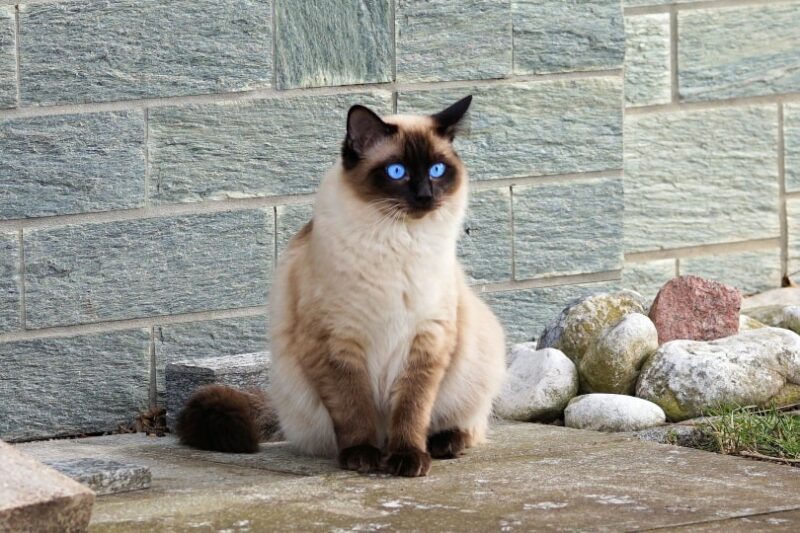Brazilian Shorthair Cat: Info, Pictures, Characteristics & Facts

Updated on

| Height: | 9–10 inches |
| Weight: | 10–12 pounds |
| Lifespan: | 14 to 20 years |
| Colors: | Any color or pattern |
| Suitable for: | Families, new or experienced owners |
| Temperament: | Active and adventurous |
Brazil’s first native cat breed, the Brazilian Shorthair, is a new and exciting type of cat descended from the feral street cats found across Brazil. These cats have come a long way from their wild roots, though; generations of breeding have created an energetic, intelligent cat with all the street smarts of a city cat and a big dose of friendliness to boot. Brazilian shorthairs come in any color or pattern, but they are set apart by their lean, muscular bodies when compared to American or British counterparts.
They are happy in families or with individuals and can be comfortable in apartments as long as they have ample space to play in the form of climbing trees and other cat-friendly distractions, making them a great pet that is just starting to gain recognition outside of their home country.
Brazilian Shorthair Kittens
Brazilian Shorthair cats are still rare in the US, so it’s hard to give a specific price. You’ll likely pay around a few hundred dollars at a reputable breeder, but very few are born in the US right now, so finding one can be tricky.
Once you take your kitten home, you should also budget for other expenses such as pet insurance, vet bills, food, and toys.
3 Little-Known Facts About the Brazilian Shorthair
1. Explorer Roots
Although there were many wild cats in the Americas, domestic cats didn’t make it across the pond until after Columbus came. When Europeans first came to the Americas, they brought cats on their ships to keep mice and rats away, and these became the first American cats. Today’s Brazilian Shorthair is probably descended from cats that migrated with Portuguese explorers.
2. Street Smarts
Cats are adept at surviving tough situations, so it’s not surprising that feral cat colonies live all over the world, including in Brazil. The cats that live wild in each part of the world end up slightly different to account for differences in environment, and Brazilian cats ended up lean, active, and smart, with short, sleek coats that don’t slow them down in the summer heat.
3. Modern Purebred
In the 1980s, Paolo Ruschi noticed the unique features of Brazilian cats and took an interest in them. He began breeding them and wrote up a breed standard based on the cats he saw, and the modern Brazilian Shorthair was born. In 1998, the World Cat Federation recognized the new breed.

Temperament & Intelligence of the Brazilian Shorthair
Brazilian Shorthair Cats are known for being clever and a little cheeky. They love to play and interact with humans and are often quite vocal. Some are known to have an almost human-like sense of humor, and they often love to entertain their owners with their antics. They are a fairly active cat breed, so space to play, run, and climb is a bonus.
Once their energy is used up, they often love to seek out human friends to spend downtime with and can make great cuddle buddies.
Are These Cats Good for Families? 👪
Brazilian Shorthairs generally make good family pets. They are playful and intelligent, and like most cats, they are generally patient with children. However, it’s important to supervise young children around cats. It might be cute to see your little one take an interest in your cat, but ear-pulling and tail-grabbing aren’t likely to be tolerated. Children should be monitored around pets until they are old enough to play gently and know when to let your cat have space.

Does This Breed Get Along with Other Pets?
Brazilian Shorthairs generally get on well with other cats and can be socialized to get along with dogs. However, Brazilian Shorthair cats often have a high prey drive, so they aren’t the best around small cats like fish, rodents, and small birds. If you have small pets in your house, make sure they have a cat-proof cage to keep them safe!
Things to Know When Owning a Brazilian Shorthair
Brazilian Shorthairs are generally no-frills, low-maintenance cats, but that doesn’t mean that special care isn’t sometimes needed. Here are some tips to help your Brazilian Shorthair stay healthy and happy.
Food & Diet Requirements🐡
Brazilian Shorthair cats don’t need much food—they only need about 1/3 of a cup of dry food or 4–5 oz of wet food per day. Younger cats generally need more food than older cats, and more active cats need more food than sedate cats, so if you have an especially active Brazilian Shorthair, you might need to feed a little more. In general, these cats are healthiest when you can feel their ribs through their fur and just see the outline of them as they run and play.
If the ribs are fully hidden your cat is likely eating too much, while a distinct ribcage where you can count the ribs by sight is a sign your cat might be underfed.
Exercise 🐈
Brazilian Shorthair cats need daily exercise. They are usually happy to entertain themselves and self-motivated when it comes to exercise, but it’s important to give them options for play and stimulation so that they don’t get bored. If your cat is kept stimulated and has plenty of exercise and attention, he’s less likely to make his own fun by shredding curtains, knocking over dishes, or otherwise engaging in destructive behaviors.

Training 🧶
Brazilian Shorthair cats are intelligent and people-oriented, so basic training shouldn’t be too hard. Praising good behavior and minimizing bad behavior are key to helping your cat be healthy and well-adjusted. They are also a good candidate for basic tricks and other types of training like leash training or fetch.
Some Brazilian Shorthair cats are rather stubborn, so even a patient and determined owner might find that training is more difficult than expected. They generally will only perform when motivated.
Grooming ✂️
Brazilian Shorthair cats have very short, light coats that are fairly easy to groom. These cats are usually more than capable of cleaning themselves and don’t need much help aside from a quick brush when they are shedding to help gather stray hairs. As your cat ages, he might need a little more help with grooming, but most cats don’t need much, and the Brazilian Shorthair is no exception.
Health and Conditions 🏥
The Brazilian Shorthair is a very healthy breed because of the wide gene pool they are drawn from and their street-dwelling ancestors. Right now, there aren’t any known health conditions to slow your cat down, but of course, no cat is completely healthy. Many cats will overeat if given the chance and develop obesity or dental issues.
You should also take your cat in for regular checkups to ensure that you don’t miss any unexpected health conditions.
- Obesity
- Dental Issues
- None known
Male vs Female
Brazilian Shorthair cats are generally similar in temperament regardless of gender, but there are some differences. Male Brazilian Shorthairs tend to be larger. When they aren’t neutered, they may be more aggressive towards other cats and will often engage in spraying and scent marking. Neutered males are much more relaxed and do well in multi-cat groups.
Female Brazilian Shorthairs are smaller and often slightly more anxious. Personality matters a lot. Your Brazilian Shorthair female is much more likely to live a long and healthy life if she’s spayed, and spaying will also help reduce the issues that come with a heat cycle for your cat.
Conclusion
As you can see, the Brazilian Shorthair is a new and exciting breed with lots of possibilities. Although these cats aren’t as recognizable as many other breeds, they have their own charm because of their intelligence, curiosity, and energy. These cats make great pets and are slowly gaining acceptance in the cat breeding world as their popularity grows.
- SeeAlso: British Cat Breeds (with Pictures)
Featured Image Credit: Oak Tree Studiostock, Shutterstock











